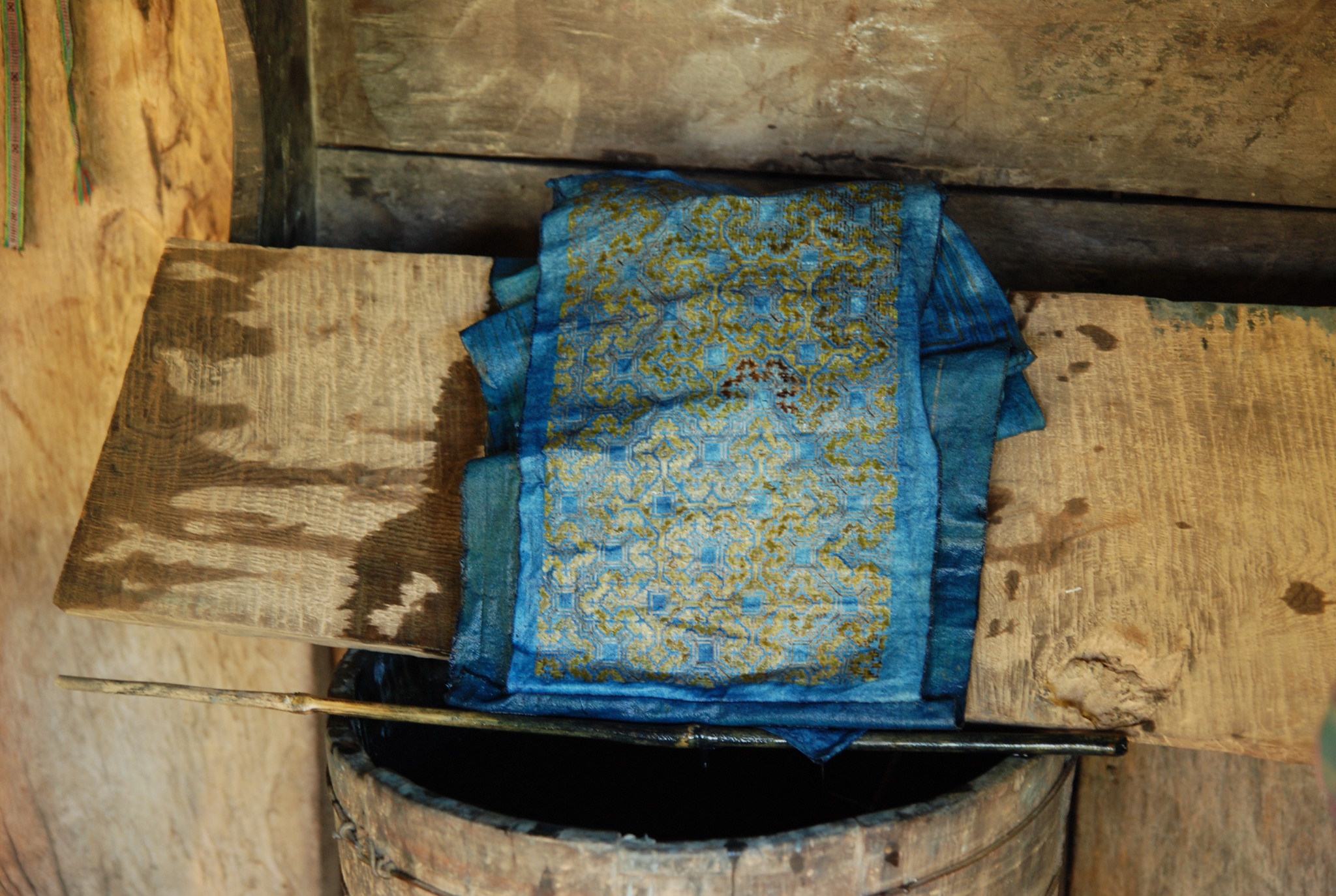The art of Hmong Batik
Batik is a very popular fabric decoration technique of many ethnic groups. Basically, it is a technique of using molten beeswax, painting on a fabric surface, covering the location where the original color of the fabric is to be retained. The fabric will be dyed with cool dyes and finally boiled in boiling water. Beeswax melted in boiling water will reveal the covered pattern.
In Vietnam, HMong women are very skillful in decorating with beeswax. Different batik patterns can be seen on their skirts, dresses, and baby carriers. Each hand made product carries the pride and love of the artisans.
CRAFT LINK is pleased to present the Batik Art of the Hmong people in Pa Co commune, Mai Chau district, Hoa Binh province and the Hmong in Che Cu Nha commune, Mu Cang Chai district, Yen Bai province.
????? ??? ????????? ??? ?????
Fabric: cotton or linen fabric is washed and flattened against a flat wooden board with a boar’s canine tooth
Pen for drawing batik is a special tools with bamboo handle. The pen tip is made of two small, thin, rounded and smooth copper pieces, facing each other to contain hot beeswax inside.
Beeswax: natural beeswax is collected in the forest
Indigo: indigo is often planted in the garden, where the soil if high and dry. Indigo plants are usually harvested in the dry season and processed into a slurry paste for fabric dyeing.
??????? ?????
Beeswax can only be used to paint in a melted state. So when drawing batik, people always have to sit next to a charcoal stove and beeswax is always on the stone. They use the pen, dip into beeswax and draw the patterns as they like. Sometimes basic patterns are already marked on the fabric. After finishing drawing, the fabric already looks like a sophisticated art work with brown wax patterns on white background.
?????? ?????????? ??? ?????? ??????
Indigo processing: indigo is usually harvested and processed in the dry season. Fresh indigo leaves and branches are soaked in a barrel of water for several days. After that the leaves are removed and lime is stirred in. A mixture of indigo and lime settles to the bottom of the container. The liquid is poured off and the remaining indigo paste is mixed with purified ash water, wine and a variety of leaves.
Indigo dyeing: to obtain a deep, dark blue color, the fabric must be dyed several times. After soaking the fabric in indigo water for a while, people bring them to dry under the sun, then continue to soak and dry…The dyeing cycle can last for months and is usually done during sunny days. In the process of dyeing, people have to be very gentle, careful because if the painted beeswax are cracked, indigo will infuse and make patterns being blurring or not sharp.
Each ethnic group has its own secret formula in indigo processing. The indigo dyeing is very picky and indigo is considered to have its own “soul” so sometimes people need to have special taboos.
??????? ??????? ??? ??????? ?????????
People dip the painted beeswax fabric into boiling water. The beeswax melts under the heat and is separated from the fabric. At the time, the patterns covered by beeswax will come out and have the original white color of the fabric, appealing on the indigo background. The fabric will then be washed, dry and ready to be sewn into the appropriate products.




















